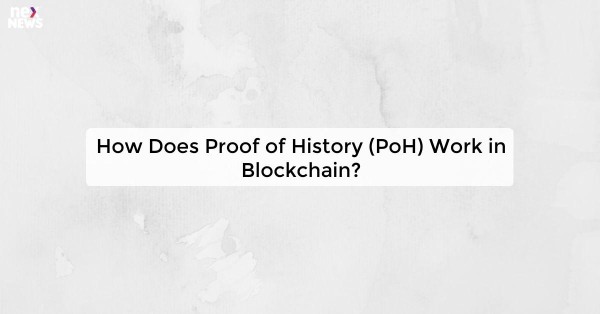Proof of History Explained
Proof of History (PoH) is a concept that serves as a foundational element in the realm of blockchain technology. Essentially, PoH enhances the process of timestamping events in a verifiable and secure manner, adding an extra layer of trust and transparency to the blockchain network. By creating a chronological order of events that cannot be altered, PoH enables more efficient and reliable consensus mechanisms within the blockchain.
The beauty of PoH lies in its ability to provide a clear and immutable record of the sequential order of transactions or events, without the need for energy-intensive computations or complex algorithms. This innovative approach not only streamlines the validation process but also significantly reduces the resources required for maintaining the blockchain network. PoH essentially acts as a timestamping mechanism that helps nodes reach consensus more quickly and effectively, ultimately enhancing the overall efficiency and scalability of blockchain systems.
Understanding the Concept of PoH
Proof of History (PoH) is a novel concept that plays a crucial role in the realm of blockchain technology. It serves as a mechanism for ordering and timestamping data in a blockchain network, ensuring the integrity and reliability of information stored within the system. By leveraging PoH, blockchain platforms can maintain a consistent chronological record of transactions, enhancing transparency and security.
The fundamental idea behind PoH is to create a verifiable and immutable sequence of events that can be cryptographically verified by network participants. In essence, PoH acts as a clock that timestamps each transaction in a blockchain, eliminating the need for resource-intensive consensus mechanisms like Proof of Work (PoW) or Proof of Stake (PoS). This innovative approach not only improves the scalability and efficiency of blockchain networks but also enhances their overall performance and reliability.
The Role of PoH in Blockchain Technology
Proof of History (PoH) plays a crucial role in the world of blockchain technology. By providing a secure and efficient way to timestamp data, PoH enhances the overall trustworthiness and transparency of transactions on the blockchain. This mechanism ensures that the chronological order of events is accurately recorded, making it easier to verify the authenticity of data within the blockchain network.
In addition to bolstering the security and reliability of the blockchain, PoH also contributes to the scalability of the network. By utilizing a proof mechanism that does not require intensive computational resources, PoH allows for faster and more cost-effective transaction processing. This efficiency is paramount in ensuring that blockchain technology can handle a growing number of transactions without compromising on speed or security.
The Mechanism Behind Proof of History
Proof of History (PoH) operates on a simple yet innovative premise. Essentially, it functions by leveraging a verifiable delay function (VDF) to establish a sequential order for transactions on a blockchain. This VDF process generates a unique proof of time that can be used to orderly record the historical sequence of events. By incorporating this mechanism, PoH eliminates the need for computationally intensive tasks like mining, significantly improving the efficiency and scalability of blockchain networks.
Moreover, PoH ensures the integrity and immutability of the blockchain through its chronological ordering of transactions. The timestamped proofs generated by the VDF serve as a reliable source of truth, making it practically infeasible for malicious actors to tamper with the historical data on the blockchain. This mechanism not only enhances the overall security of the network but also streamlines the consensus process by providing a deterministic and transparent method for validating transactions.
Advantages of Implementing PoH in Blockchain
Utilizing Proof of History (PoH) in blockchain technology brings forth a myriad of advantages that revolutionize the way transactions are validated and recorded. One key benefit is the ability to significantly enhance the overall scalability of blockchain networks. By leveraging the timestamping mechanism of PoH, transactions can be confirmed more swiftly and efficiently, thereby reducing network congestion and improving the overall throughput of the system.
Moreover, the implementation of PoH introduces a new level of security and trust in blockchain ecosystems. The deterministic nature of PoH ensures that the order of transactions is securely established, mitigating the risk of malicious attacks such as double-spending. This not only increases the integrity of the blockchain but also boosts the confidence of users in the reliability of the system, paving the way for a more secure and transparent digital economy.
